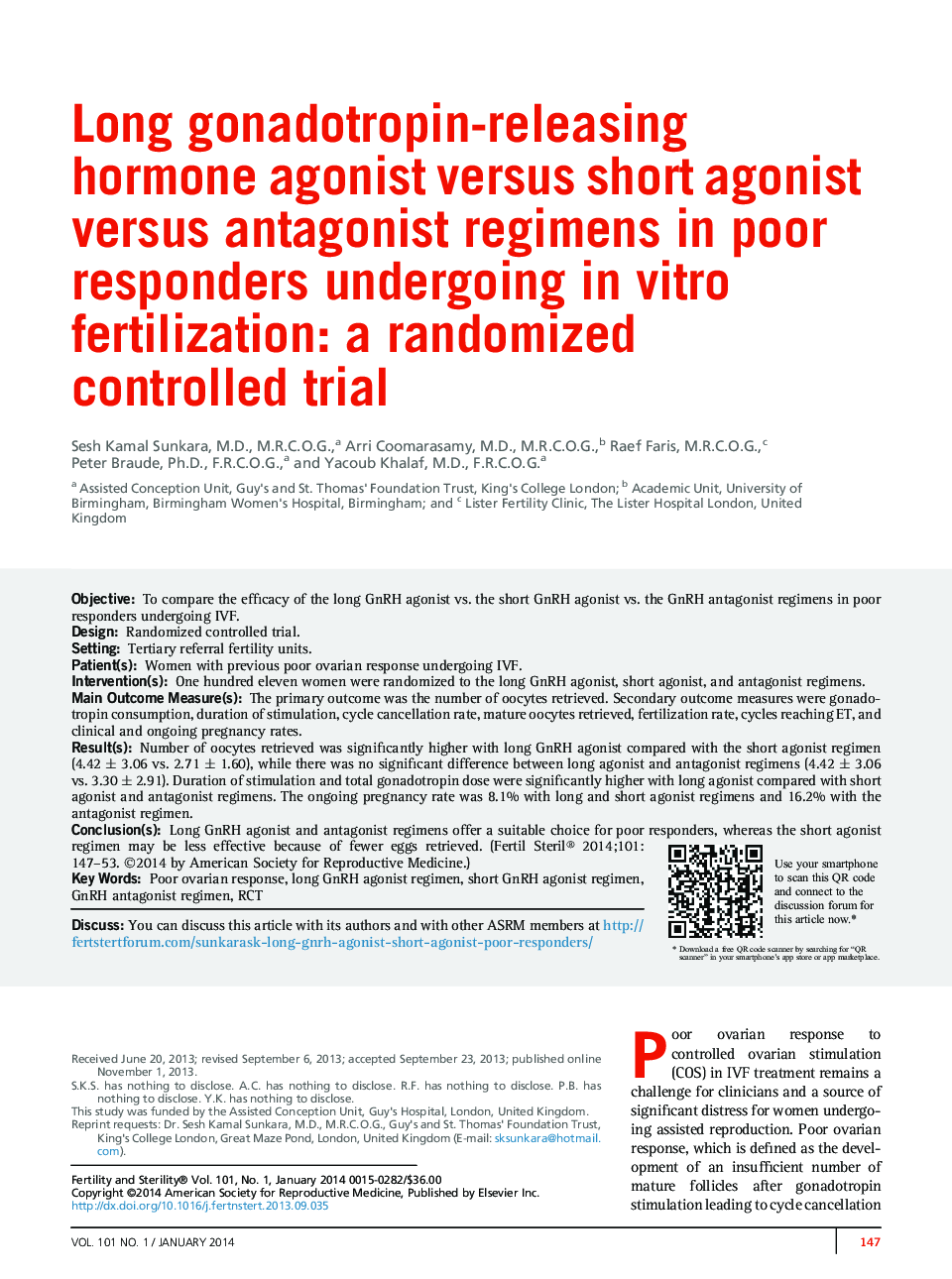| Article ID | Journal | Published Year | Pages | File Type |
|---|---|---|---|---|
| 3938417 | Fertility and Sterility | 2014 | 7 Pages |
ObjectiveTo compare the efficacy of the long GnRH agonist vs. the short GnRH agonist vs. the GnRH antagonist regimens in poor responders undergoing IVF.DesignRandomized controlled trial.SettingTertiary referral fertility units.Patient(s)Women with previous poor ovarian response undergoing IVF.Intervention(s)One hundred eleven women were randomized to the long GnRH agonist, short agonist, and antagonist regimens.Main Outcome Measure(s)The primary outcome was the number of oocytes retrieved. Secondary outcome measures were gonadotropin consumption, duration of stimulation, cycle cancellation rate, mature oocytes retrieved, fertilization rate, cycles reaching ET, and clinical and ongoing pregnancy rates.Result(s)Number of oocytes retrieved was significantly higher with long GnRH agonist compared with the short agonist regimen (4.42 ± 3.06 vs. 2.71 ± 1.60), while there was no significant difference between long agonist and antagonist regimens (4.42 ± 3.06 vs. 3.30 ± 2.91). Duration of stimulation and total gonadotropin dose were significantly higher with long agonist compared with short agonist and antagonist regimens. The ongoing pregnancy rate was 8.1% with long and short agonist regimens and 16.2% with the antagonist regimen.Conclusion(s)Long GnRH agonist and antagonist regimens offer a suitable choice for poor responders, whereas the short agonist regimen may be less effective because of fewer eggs retrieved.
